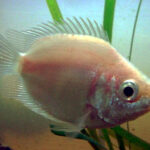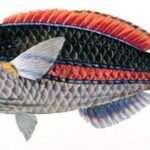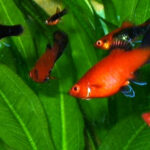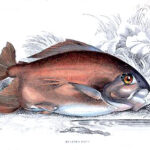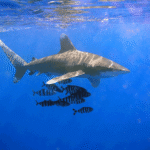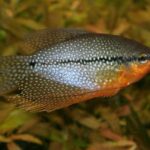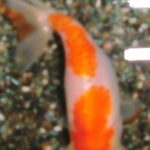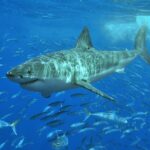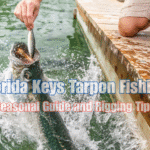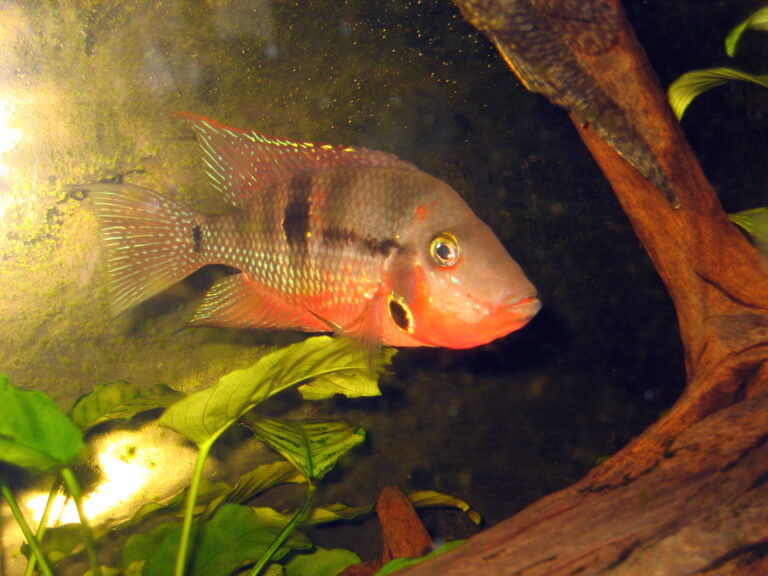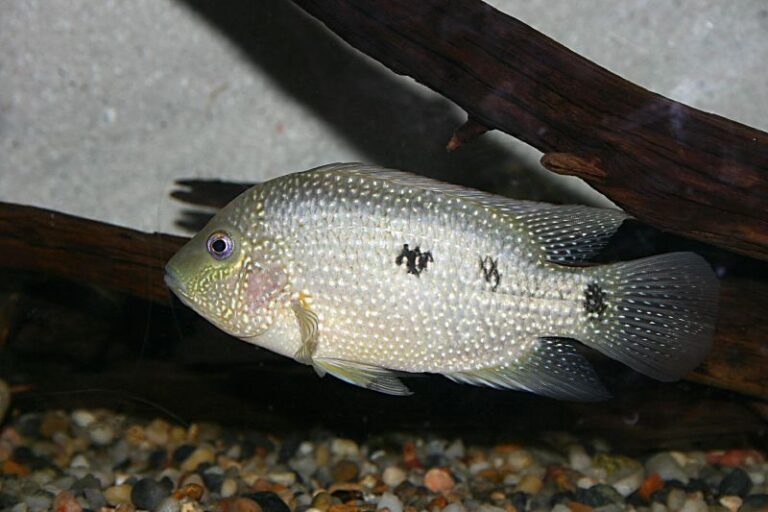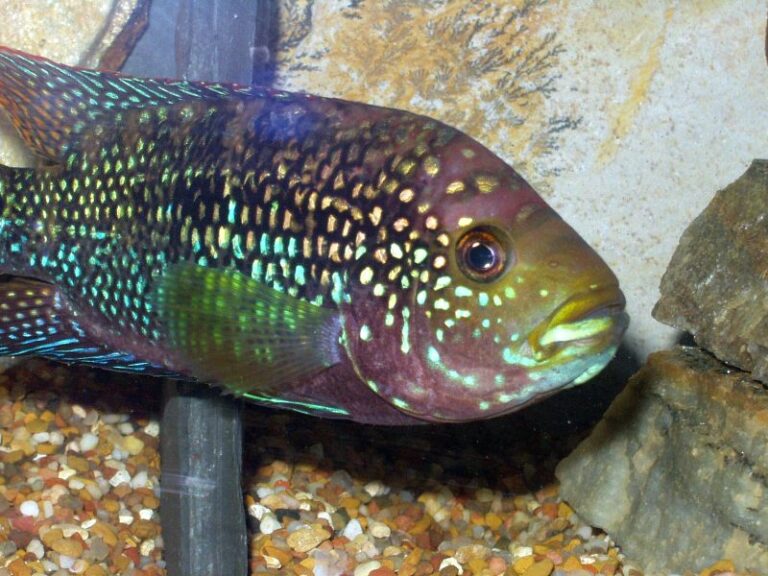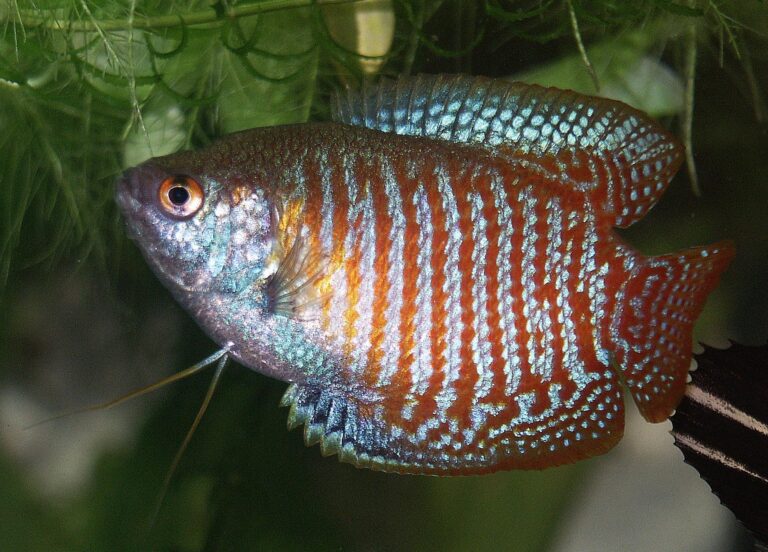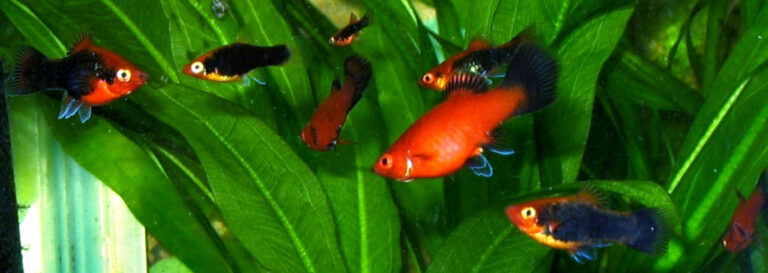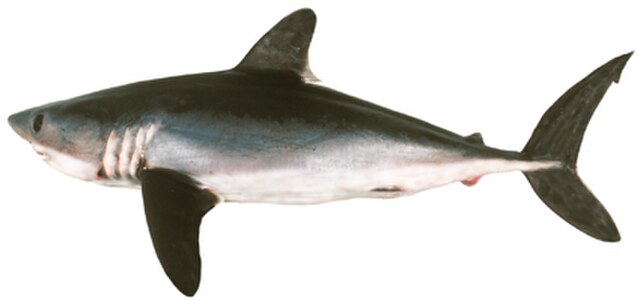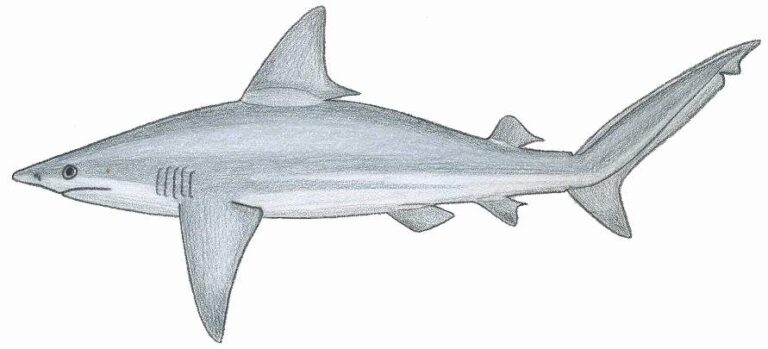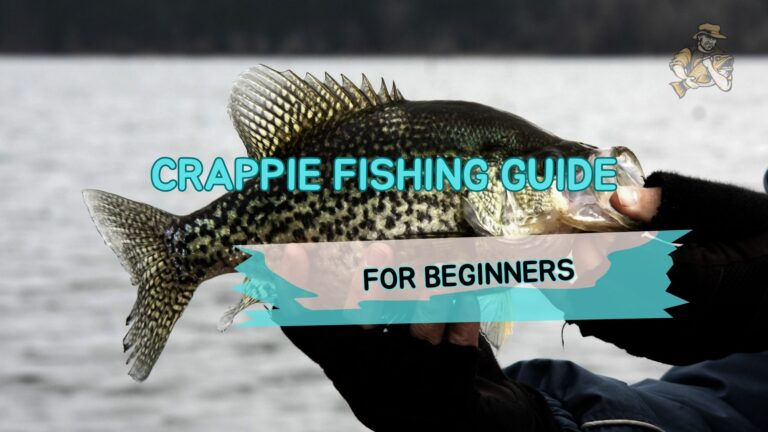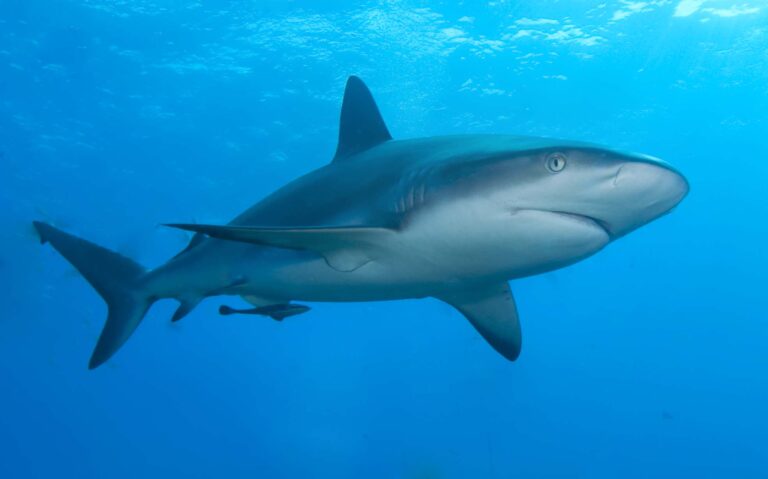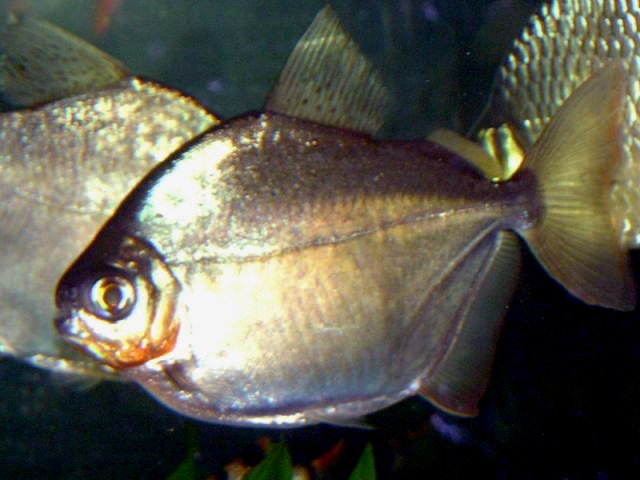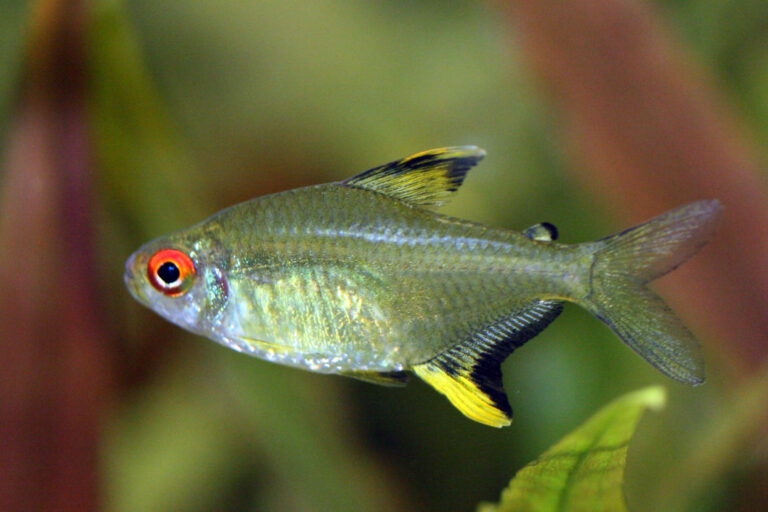Wagtail Platy
By Ryan Maron | Last Modified: June 11, 2025
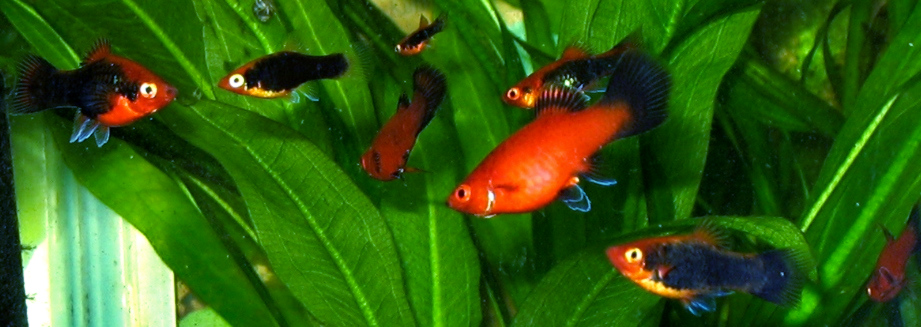
The Wagtail Platy stands as one of the most distinctive and beloved freshwater aquarium fish, renowned for its elegant fin structure and peaceful temperament. Scientifically classified as Xiphophorus maculatus, this striking variety of the common platy showcases an elongated dorsal fin that resembles a wagging tail, hence its descriptive common name. This small livebearing fish has captured the attention of aquarists worldwide through its combination of visual appeal, hardy nature, and remarkable breeding capabilities.
The Wagtail Platy plays a crucial ecological role as both a micro-predator and prey species within freshwater ecosystems. In their natural habitat, these fish contribute to controlling insect larvae populations while serving as an important food source for larger predatory fish. Their adaptability and prolific breeding habits have made them significant contributors to aquatic food webs, particularly in Central American freshwater systems. The species has gained tremendous economic importance in the global aquarium trade, representing millions of dollars in annual sales and supporting countless aquaculture operations worldwide.
| Feature | Details |
|---|---|
| Common Name | Wagtail Platy |
| Scientific Name | Xiphophorus maculatus |
| Family | Poeciliidae |
| Typical Size | 5-7 cm (2-2.8 inches), 6-8 grams |
| Habitat | Shallow freshwater streams and rivers |
| Diet | Omnivorous – algae, insects, plant matter |
| Distribution | Central America, Mexico, Caribbean |
| Conservation Status | Least Concern |
Taxonomy & Classification
The Wagtail Platy belongs to the family Poeciliidae, a diverse group of freshwater fish commonly referred to as livebearers. Within this family, the species Xiphophorus maculatus encompasses numerous color and fin variations, with the wagtail variety representing one of the most selectively bred forms. The genus Xiphophorus, which translates to “sword bearer,” includes approximately 28 recognized species, though the common platy remains the most widely distributed and commercially important.
Taxonomic classification places the Wagtail Platy within the order Cyprinodontiformes, which includes killifish, pupfish, and other small freshwater species adapted to diverse aquatic environments. The species was first described by Günther in 1866, with subsequent genetic studies revealing complex hybridization patterns between X. maculatus and related species such as X. variatus and X. hellerii.
Modern molecular analysis has identified several subspecies and regional variants of X. maculatus, each displaying unique genetic markers that reflect their geographic origins. The wagtail phenotype results from specific allelic combinations affecting melanophore distribution and fin development, creating the characteristic black-edged fins contrasting with lighter body coloration. These genetic traits have been extensively studied in laboratory settings, making the platy an important model organism for understanding inheritance patterns and color genetics in teleost fish.
Physical Description
The Wagtail Platy exhibits a compact, laterally compressed body shape typical of the Poeciliidae family, with males reaching 4-5 centimeters and females growing slightly larger at 5-7 centimeters in total length. The most distinctive feature is the prominent black coloration along the edges of all fins, particularly noticeable on the dorsal and caudal fins, which creates the “wagtail” appearance that defines this variety.
Body coloration varies considerably among individuals, ranging from bright orange and red to yellow, blue, and white, often with intermediate color combinations. The contrasting black fin margins remain consistent regardless of base body color, creating striking visual patterns that have made this variety particularly popular among aquarists. Males typically display more intense coloration and possess a modified anal fin called a gonopodium, used for internal fertilization.
The dorsal fin extends higher than in many other platy varieties, with 10-12 soft rays supporting the fin membrane. Females develop a distinctive gravid spot near the anal fin when carrying developing fry, appearing as a dark triangular marking that becomes more pronounced as pregnancy progresses. Scale counts typically range from 26-28 along the lateral line, with cycloid scales providing a smooth body surface that facilitates efficient swimming in shallow water environments.
Sexual dimorphism becomes apparent at approximately 3-4 months of age, with males developing the characteristic gonopodium and more streamlined body shape. Females maintain broader bodies adapted for carrying developing embryos, with expandable abdominal regions that accommodate multiple broods throughout their reproductive lifespan.
Habitat & Distribution
Wagtail Platies originate from the freshwater systems of eastern Mexico, Guatemala, and Belize, inhabiting slow-moving rivers, streams, and coastal lagoons throughout their native range. These environments typically feature soft substrates, abundant aquatic vegetation, and water temperatures ranging from 22-28°C throughout most of the year. Natural populations prefer shallow areas with depths rarely exceeding two meters, where sunlight penetration supports robust plant growth.
The species demonstrates remarkable adaptability to varying water chemistry conditions, tolerating pH levels from 6.5-8.5 and hardness ranges from soft to moderately hard water. This flexibility has contributed to their success in aquaculture operations and their establishment in non-native environments worldwide. Wild populations inhabit areas with gentle currents, often associating with submerged logs, root systems, and dense macrophyte beds that provide shelter and foraging opportunities.
Seasonal variations in their native habitat include wet and dry periods that influence water levels and prey availability. During dry seasons, Wagtail Platies concentrate in deeper pools and permanent water bodies, while wet seasons allow expansion into temporary habitats and flooded areas. These environmental pressures have shaped their opportunistic feeding behavior and rapid reproductive cycles.
Human activities have significantly expanded the species’ global distribution through both intentional aquarium releases and aquaculture escapes. Established populations now exist in parts of the southern United States, Hawaii, and various tropical regions where climate conditions permit year-round survival. However, these introduced populations often face different predation pressures and ecological interactions compared to their native habitats.
Diet & Feeding Behavior
The Wagtail Platy exhibits omnivorous feeding behavior, consuming a diverse array of food sources that reflect their opportunistic nature and adaptability to varying environmental conditions. In natural settings, their diet consists primarily of algae, diatoms, small invertebrates, insect larvae, and decomposing plant material. Their small mouth size limits prey selection to items typically measuring less than 3-4 millimeters in diameter.
Feeding activity peaks during early morning and late afternoon hours when lighting conditions optimize foraging efficiency while minimizing predation risk. Wagtail Platies employ both surface feeding and mid-water foraging strategies, frequently observed picking at biofilm formations on submerged surfaces and plant leaves. Their pharyngeal teeth are well-adapted for processing both plant and animal matter, allowing efficient extraction of nutrients from diverse food sources.
Seasonal dietary shifts occur in response to prey availability and environmental conditions. During warmer months, increased insect activity provides abundant protein sources including midge larvae, small crustaceans, and emerging aquatic insects. Cooler periods see greater reliance on algae, detritus, and stored plant materials, requiring behavioral adjustments to maintain nutritional balance.
Juvenile Wagtail Platies initially feed on microscopic organisms including rotifers, paramecia, and newly hatched brine shrimp nauplii. Growth rates during the first month of life directly correlate with protein availability, with well-fed juveniles reaching sexual maturity 2-3 weeks earlier than those experiencing nutritional limitations. This feeding flexibility contributes significantly to their reproductive success and population stability across diverse aquatic environments.
Behavior & Adaptations
Wagtail Platies display complex social behaviors characterized by loose schooling tendencies and well-defined dominance hierarchies, particularly evident during feeding periods and territorial disputes. Males establish temporary territories around preferred feeding areas or shelter sites, engaging in lateral displays and fin-spreading behaviors to assert dominance over subordinate individuals. These territorial behaviors intensify during breeding seasons when competition for female attention reaches peak levels.
The species demonstrates remarkable behavioral plasticity in response to environmental pressures and predation threats. When predators are detected, Wagtail Platies exhibit rapid schooling behavior, forming tight aggregations that confuse potential threats and reduce individual predation risk. Their natural wariness makes them effective sentinel species, with alarm behaviors quickly spreading throughout local populations when danger is perceived.
Temperature-mediated behavioral changes significantly influence daily activity patterns and energy expenditure. During optimal temperature ranges (24-26°C), Wagtail Platies maintain active foraging and social interactions throughout daylight hours. Cooler temperatures reduce metabolic rates and activity levels, while elevated temperatures above 30°C trigger stress responses including reduced feeding and increased shelter-seeking behavior.
Adaptation to shallow-water environments has resulted in enhanced surface awareness and jump-escape responses when threatened. This behavior, while advantageous in natural settings, requires careful aquarium management to prevent accidental escapes. Their ability to tolerate fluctuating water levels and temporary habitat changes reflects evolutionary pressures from seasonal flooding and drought cycles in their native range, contributing to their success as an aquarium species worldwide.
Reproduction & Life Cycle
The Wagtail Platy employs internal fertilization and viviparity, giving birth to fully developed, free-swimming fry after a gestation period of approximately 24-30 days depending on water temperature and female condition. Reproductive maturity occurs at 3-4 months of age, with females capable of storing sperm for multiple reproductive cycles following a single mating event. This adaptation allows continued reproduction even when males are absent from the population.
Courtship behavior involves elaborate male displays including fin spreading, body trembling, and persistent following of receptive females. Males possess a modified anal fin called a gonopodium, which serves as an intromittent organ for sperm transfer. Successful mating typically occurs during early morning hours when female receptivity peaks and territorial competition among males intensifies.
Brood sizes range from 10-80 fry per reproductive event, with larger, older females generally producing more offspring. Environmental factors including temperature, nutrition, and population density significantly influence fecundity rates and offspring survival. Optimal conditions can result in monthly reproductive cycles, allowing rapid population growth under favorable circumstances.
Parental care is limited, with females showing minimal interest in their offspring after birth. Fry survival depends primarily on habitat complexity and food availability, with dense vegetation providing crucial shelter from predation. Sexual differentiation occurs at approximately 6-8 weeks post-birth, with males developing gonopodia and intensified coloration patterns. Life expectancy in natural conditions typically ranges from 18-24 months, though captive specimens often live 3-4 years with proper care and nutrition.
Predators & Threats
Natural predators of the Wagtail Platy include a diverse array of aquatic and semi-aquatic species that exploit their small size and schooling behavior. Larger fish species such as bass, cichlids, and pike represent the primary aquatic predators, while birds including herons, egrets, and kingfishers pose significant threats to individuals in shallow water areas. Juvenile stages face additional predation pressure from dragonfly nymphs, diving beetles, and other aquatic invertebrates.
Habitat degradation represents the most significant long-term threat to wild Wagtail Platy populations, with agricultural runoff, urban development, and water extraction impacting their native freshwater systems throughout Central America. Pollution from pesticides and fertilizers alters water chemistry and reduces prey availability, while sedimentation from deforestation impacts spawning areas and nursery habitats.
Climate change poses emerging challenges through altered precipitation patterns and increased temperature extremes that may exceed their thermal tolerance ranges. Drought conditions concentrate populations in reduced habitat areas, increasing competition and disease transmission rates, while extreme flooding events can disperse populations and disrupt established breeding territories.
Introduced species in both native and non-native ranges create additional competitive pressures and predation threats. In some regions, larger introduced fish species have significantly impacted local Wagtail Platy populations through direct predation, while competing species may reduce food availability and optimal habitat access. Disease transmission from introduced species represents an ongoing concern for wild population stability.
The aquarium trade paradoxically provides both conservation benefits through captive breeding programs and potential threats through genetic pollution of wild populations when aquarium strains escape or are released into natural systems.
Conservation Status
The International Union for Conservation of Nature (IUCN) currently classifies the Wagtail Platy as “Least Concern” due to stable wild populations and widespread distribution throughout their native range. However, this classification may not fully reflect localized population declines in specific watersheds impacted by human activities and environmental degradation.
Regional conservation assessments reveal concerning trends in some areas, particularly where habitat modification has been extensive. Mexican populations in heavily developed coastal areas show reduced genetic diversity and altered population structure compared to more pristine inland populations. These findings suggest the need for more detailed monitoring programs to track population health and genetic integrity over time.
Ex-situ conservation efforts through aquarium breeding programs maintain substantial genetic reserves, though concerns exist regarding genetic drift and loss of wild-type characteristics in commercial breeding lines. Several research institutions maintain breeding colonies derived from wild-caught specimens to preserve natural genetic diversity for potential future reintroduction programs.
Habitat protection initiatives in Central America increasingly recognize the importance of small freshwater species like the Wagtail Platy as indicators of ecosystem health. Protected areas that encompass their native watersheds provide crucial refugia, though many of these areas face ongoing pressure from agricultural expansion and water resource development.
International trade regulations under CITES do not currently apply to this species due to its stable conservation status, though monitoring of wild collection for the aquarium trade continues through national wildlife agencies. The species’ prolific breeding in captivity has largely eliminated pressure on wild populations for commercial purposes.
Human Interaction
The relationship between humans and Wagtail Platies spans several centuries, beginning with indigenous peoples of Central America who likely observed and potentially utilized these fish as food sources during seasonal aggregations. European colonization introduced scientific documentation and collection activities that eventually led to their establishment in the global aquarium trade during the early 20th century.
Modern aquaculture operations produce millions of Wagtail Platies annually, representing a significant economic sector within the ornamental fish industry. Breeding facilities throughout Asia, particularly in Singapore, Thailand, and Malaysia, supply international markets with various color and fin variants developed through selective breeding programs. These operations employ sophisticated water management systems and feeding protocols to maximize production efficiency and fish quality.
Educational applications have made the Wagtail Platy valuable for teaching genetics, reproduction, and aquatic ecology in schools and universities. Their easily observed breeding behavior, clear sexual dimorphism, and rapid generation times provide excellent opportunities for students to study inheritance patterns and population dynamics. Research applications continue to advance understanding of fish physiology, behavior, and environmental adaptation.
The species serves important roles in mosquito control programs in some regions, where their appetite for insect larvae helps reduce disease vector populations in water storage systems and artificial ponds. This biological control application represents an environmentally sustainable alternative to chemical treatments in appropriate settings.
Cultural significance varies among different regions, with some aquarium enthusiasts developing strong preferences for specific color varieties and participating in competitive showing events. Online communities share breeding techniques, genetic information, and conservation concerns, creating global networks of knowledge exchange that benefit both hobbyists and researchers.
Interesting Facts
The Wagtail Platy possesses remarkable sperm storage capabilities, with females capable of utilizing stored genetic material for up to six months following a single mating event. This adaptation allows continued reproduction during periods when males are scarce, contributing significantly to population resilience in variable environments. Research has documented cases where females produced up to eight consecutive broods from a single fertilization event.
Color genetics in Wagtail Platies involve at least 15 different genes controlling various aspects of pigmentation, fin development, and pattern expression. The interaction between these genes creates virtually unlimited color combinations, making each individual genetically unique. Some color varieties exhibit temperature-sensitive expression, with pigmentation intensity changing based on water temperature during development.
These fish demonstrate surprising cognitive abilities, including recognition of individual tank mates and simple learning behaviors related to feeding schedules and predator avoidance. Laboratory studies have documented memory retention spanning several weeks, suggesting more complex neural processing than traditionally attributed to small freshwater fish species.
Wild Wagtail Platies can survive in brackish water conditions up to 15 parts per thousand salinity, an unusual adaptation for freshwater species that likely evolved in coastal areas where saltwater intrusion occurs during storm events. This tolerance has facilitated their establishment in some coastal environments outside their native range.
The species exhibits remarkable regenerative abilities, capable of regrowing damaged fin tissue within 2-3 weeks under optimal conditions. This healing capacity likely evolved as an adaptation to frequent fin damage from predator attacks and environmental hazards in their natural shallow-water habitats, where quick recovery could mean the difference between survival and death.
Frequently Asked Questions
How can I distinguish male and female Wagtail Platies?
Males develop a modified anal fin called a gonopodium, which appears as a pointed, rod-like structure used for reproduction. Females retain the normal fan-shaped anal fin and develop a gravid spot (dark triangular marking) near the anal fin when pregnant. Males are typically smaller and more colorful, while females grow larger and have broader bodies adapted for carrying fry.
What water conditions do Wagtail Platies require for optimal health?
Wagtail Platies thrive in water temperatures between 22-28°C (72-82°F) with pH levels ranging from 6.5-8.5. They prefer moderately hard water but adapt well to various water chemistry conditions. Regular water changes and stable parameters are more important than achieving specific values, as these fish are notably hardy and adaptable to different aquatic environments.
How often do Wagtail Platies reproduce and how many fry do they produce?
Mature females can reproduce monthly under optimal conditions, with gestation periods lasting 24-30 days depending on temperature. Brood sizes typically range from 10-80 fry, with larger, older females generally producing more offspring. Females can store sperm and continue producing fry for several months following a single mating event, making population management important in aquarium settings.
Are Wagtail Platies compatible with other aquarium fish species?
Wagtail Platies are generally peaceful community fish that coexist well with other non-aggressive species of similar size. Compatible tank mates include guppies, mollies, swordtails, and small catfish species. Avoid housing them with large, aggressive species that might prey on them, and provide adequate space and hiding places to reduce territorial conflicts during breeding periods.
Conclusion
The Wagtail Platy represents a remarkable success story in freshwater aquaculture, combining natural hardiness with striking visual appeal that has captivated aquarists worldwide. Their role as both an important component of Central American freshwater ecosystems and a cornerstone species in the global aquarium trade demonstrates the complex relationships between conservation, commerce, and human fascination with aquatic life. As environmental pressures continue to impact their native habitats, the extensive captive populations serve as crucial genetic reservoirs while their continued study advances our understanding of fish biology, genetics, and reproductive strategies.
Share The Article:
More Fish Species:
-
Firemouth Cichlid
The Firemouth Cichlid (*Thorichthys meeki*) stands as one of Central America’s most recognizable freshwater fish species, distinguished by its…
-
Texas Cichlid
The Texas Cichlid (Herichthys cyanoguttatus) stands as one of North America’s most distinctive freshwater fish species, representing the sole…
-
Jack Dempsey Fish
The Jack Dempsey Fish stands as one of Central America’s most distinctive cichlid species, captivating aquarists and researchers alike…
-
Gouramis
Gouramis represent one of the most fascinating and diverse groups of freshwater fish, belonging to the family Osphronemidae within…
-
Spinner Shark
The Spinner Shark (Carcharhinus brevipinna) stands as one of the ocean’s most distinctive and acrobatic predators, earning its name…
-
Tuxedo Platy
The Tuxedo Platy (Xiphophorus maculatus) stands as one of the most recognizable and beloved freshwater aquarium fish species, distinguished…
Discover
-
How to Set Up a Fishing Pole For Beginners
After three decades of teaching friends and family how to fish, I’ve learned that setting up a fishing pole…
-
Pelagic Thresher Shark
The Pelagic Thresher Shark stands as one of the ocean’s most distinctive and efficient predators, renowned for its dramatically…
-
Porbeagle Shark
The Porbeagle Shark (*Lamna nasus*) stands as one of the most fascinating and ecologically significant predators in the North…
-
Sandbar Shark
The Sandbar Shark (Carcharhinus plumbeus) stands as one of the most recognizable and ecologically significant members of the requiem…
-
Surfcasting Techniques: Master Beach Fishing and Catch More Fish
There’s something almost magical about standing at the edge of an ocean, rod in hand, as waves crash around…
-
Crappie Fishing Guide for Beginners | 2025
Crappie fishing might just be one of the most rewarding experiences for new anglers. These popular panfish are abundant,…
Discover
-
Mastering Fishing Casting Techniques: Complete Guide
Have you ever watched someone cast their line with perfect precision while you struggle to avoid tangling yours in…
-
Caribbean Reef Shark
The Caribbean Reef Shark (*Carcharhinus perezi*) stands as one of the most recognizable and ecologically significant predators patrolling the…
-
Silver Dollar Fish
The Silver Dollar Fish (*Metynnis argenteus*) stands as one of South America’s most recognizable freshwater species, renowned for its…
-
Fishing Tips for Beginners: An Expert Guide to Your First Successful Catch
Getting started with fishing can feel overwhelming. Trust me, I’ve been there – staring at walls of equipment, trying…
-
Smallmouth Black Bass Fishing: Complete Guide for 2025
If you’ve ever felt that sudden, powerful tug on your line followed by an acrobatic jump that leaves your…
-
Lemon Tetra
The Lemon Tetra (*Hyphessobrycon pulchripinnis*) stands as one of South America’s most vibrant freshwater fish species, distinguished by its…


